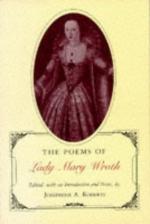|
This section contains 8,618 words (approx. 29 pages at 300 words per page) |

|
SOURCE: “Ariadne, Venus, and the Labyrinth: Classical Sources and the Thread of Instruction in Mary Wroth's Works,” in Journal of English and Germanic Philology, Vol. 96, No. 2, April 1997, pp. 204-21.
In the following essay, Farabaugh discusses the classical sources that Wroth used in her works and argues that, as with her subversion of her contemporary sources, Wroth shaped classical elements to further her literary agenda.
Much has been written about Mary Wroth's use of genres as forms of identification with her famous uncle, Sir Philip Sidney, and her aunt, Mary Sidney Herbert, Countess of Pembroke. Scholarship has begun to examine the ways in which she subverted those genres, particularly in the role reversal she puts forward in Pamphilia to Amphilanthus, where the female is the speaker in a Petrarchan sonnet sequence about a male beloved, and in the romance The Countess of Montgomery's Urania, where Pamphilia models constancy and...
|
This section contains 8,618 words (approx. 29 pages at 300 words per page) |

|


